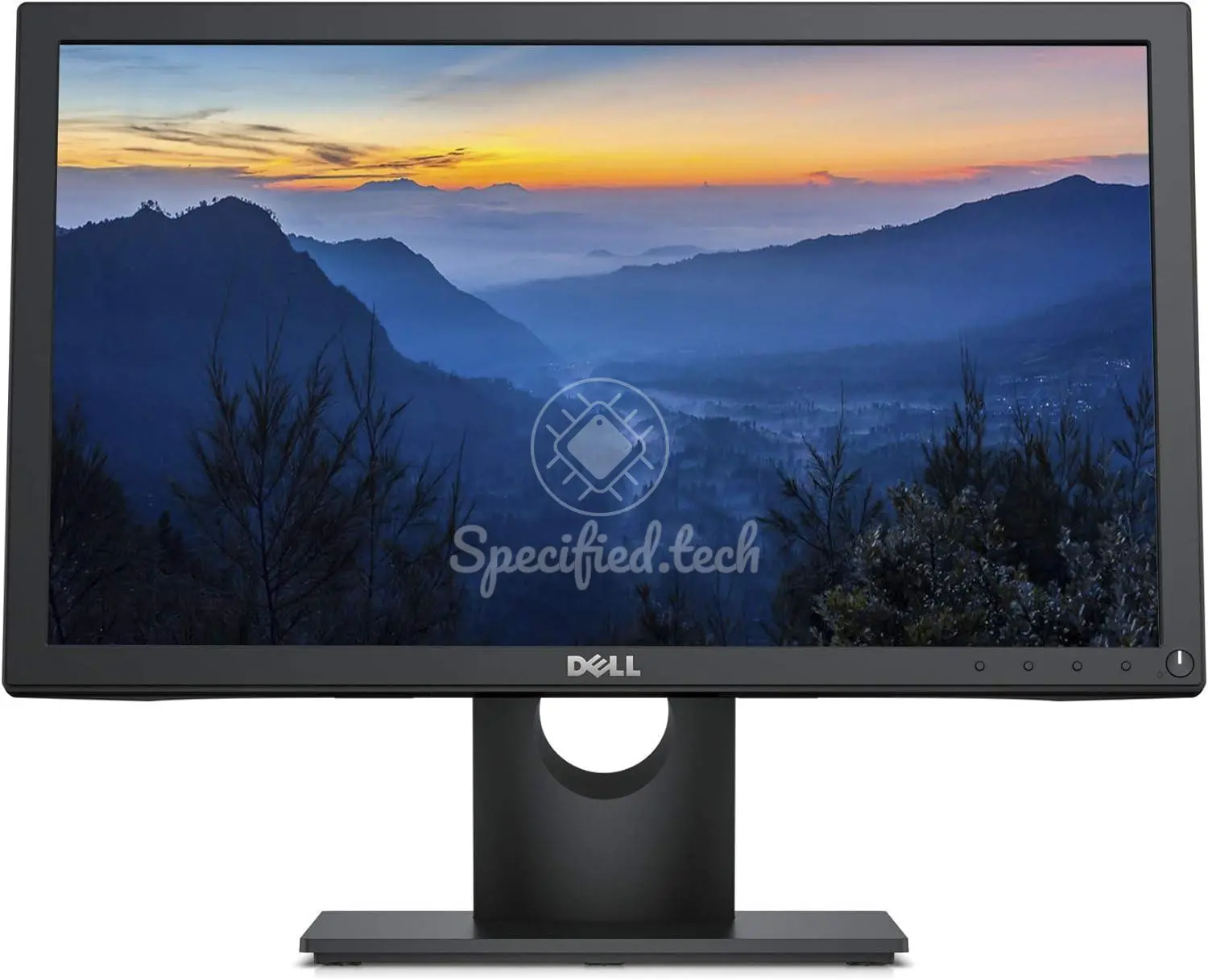
Display, power consumption, dimensions, technologies used, connections, certifications, comfort features. All these keywords can be relevant for a purchase decision, but an exact comparison is often difficult. For this reason, we will summarize as many of the mentioned specifications as possible in an understandable form in the course of this article. Let's start with the most important component of the E1916H from Dell.
Display
Videos and/or other applications can be displayed on the monitor's 18 inches ( 47 cm on the diagonal). The size specification of a monitor refers to the screen diagonal, which is usually specified in inches. It is only comparable to a limited extent for different formats. For example, a conventional 4:3 monitor with the same screen diagonal has 6% less width, but 13% more height and a total of 7% more surface area than a monitor in 16:10 format. Despite the difference in working area, wider monitors are better suited for consuming games or current movies, for example. It is also easier to display several documents simultaneously on widescreen monitors. So, it depends on the current use case whether the aspect ratio of 1.779 : 1 makes sense for the intended use case. Approximately 79.6 % of the front surface of the monitor is covered by the display, while the remaining area consists of screen edges that do not allow any image output. If you want to set up several monitors next to each other, it is advisable to prefer models with the narrowest possible edges. The display is a TN panel. The panel has a resolution of 1366 x 768 px. The pixel density is 84 ppi. The pixel pitch is 0.3 mm. The continuous possible brightness specified by the manufacturer Dell is 200 nt. The panel is illuminated by W-LED. The built-in panel ensures stable color reproduction of the image, even at deviating viewing angles, by means of its 170 ° (horizontal) viewing angle. Dell promises stable color reproduction moreover within a 160 ° vertical angle. The refresh rate is horizontally seen at the E1916H 30 khz to 83 khz. Vertically, however, the image renews at a minimum rate of 56 hz up to 76 hz. The minimum response time of the monitor is ms. The display panel is Anti-glare/Matte (3H).
Color representation
The panel has a bit depth of 8 per color channel, but what does that mean? The number of bits determines how many colors can be encoded for the individual pixels of the display. For an 8-bit panel, for example, this is 256 different colors (2^8 = 256). However, since we usually display three different colors per pixel at the same time, in theory about 16 million (256^3) different colors are possible by mixing the three pixels. A 10-bit panel could even display a billion colors. According to the manufacturer, the coverage of the NTSC 1953 color space is 72 %.
Contrast ratio
Contrast ratio is a common measurement used to represent the maximum relative differences in brightness between black and white. It describes the ability of a screen or projector to produce a high-contrast image and is the quotient of the maximum and minimum displayable luminance. The higher the values are away from each other, the stronger the quantitatively seen difference between black and white is set up, which in turn results in an improved image quality. This monitor from Dell has a static contrast ratio of 600 : 1 , according to the manufacturer.
HDR
The monitor supports all HDR modes listed here:
screen design
For a possible wall mounting or comparison to the currently owned monitor at the beginning, the dimensions of the monitor without stand/feet: 26.6 cm x 44.5 cm x 5.1 cm (HxWxD)
The size of the monitor (stand included) is 35.9 x 44.5 x 16.7 cm (HxWxD). As for the weight, Dell states a total weight of 2.7 kg with stand. The monitor E1916H without the stand weighs 2.26 kg. This weight reduction should be taken into account for wall or arm mounting, since monitor arms have a maximum load capacity. Speaking of weight without a stand and thus wall or table mounts. The monitor supports a Vesa mounting.
Rotate, tilt and swivel
The monitor from Dell cannot be rotated. The monitor cannot be swiveled. This feature could be retrofitted with a third-party stand. Thanks to the tilt function of the E1916H monitor, the screen position can be flexibly adjusted to minimize dazzling light sources and ensure optimum visibility. The angle of inclination to the rear is 21. The monitor can be tilted forward by 5 degree.
Ports
The monitor can be connected via 1 VGA ports.
camera
This monitor does not have a camera.
Features
- The display/monitor supports Frame Rate Compensation.
Power consumption
The average consumption figure for E1916H is 13.3 w. The maximum power consumption (peak) specified for this monitor is 17 w. In standby mode, the device consumes approximately 0.3 w. When switched off, on the other hand, the monitor consumes only 0.3 w. The monitor can be operated on a 110v power supply. The monitor can be operated on a 220v power supply. There are 0.8 amps specified. The power grid has to supply a frequency of 50 hz to 60 hz.
Environment
The maximum height at which the monitor may be operated, according to the manufacturer's specifications, is 5 km. For temperature, the maximum permissible ambient temperature is 40 °C. Below a temperature of 0 °C , the monitor from Dell should again not be used. The humidity must not exceed 80 percent. At least, however, 10 percent humidity. The monitor may be stored at a maximum humidity of 90 percent. The minimum humidity during storage should not fall below 5 percent. The maximum storage temperature should be according to Dell 60 °C. Minimal were given by Dell -20 °C. According to the manufacturer, the monitor may be stored at a maximum height of 12.192 km.
Further information
- 100x100

